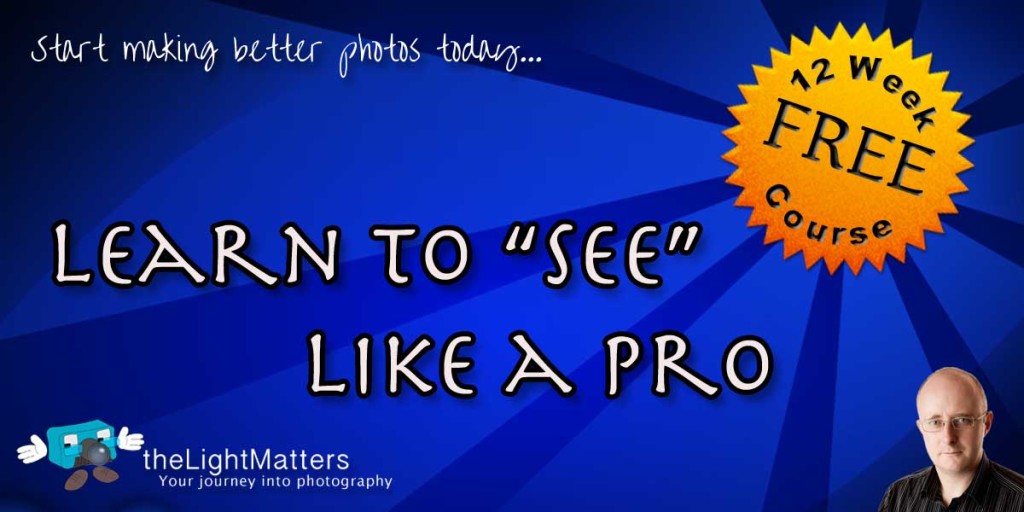Following on from last week’s article on exposure and likened it to fillling a bucket of water, this week I’d like to talk a little about the key components of exposure and more importantly how they combine together to let us fill our bucket and how we may balance one against the other.
Key Components of Exposure
Last week I discussed exposure or rather a light-hearted analogy of what exposure is , comparing it to filling a bucket of water. This week I’m going to build on that analogy but start talking more about the camera and use camera terminology. This isn’t a complex subject but if you find yourself getting lost try and relate te whole thing back to the bucket of water analogy.
So what are the components of exposure?
Image exposure is governed by four factors. Three of which we have complete control over in the camera and one we don’t:
- Ambient Light – the amount of light in the scene
- ISO – The sensitivity of the camera to light
- Aperture – The size of the hole that lets the light into the camera
- Shutter Speed – The length of time we let it in for
Ambient Light
In most cases we don’t have much control over the ambient light. It will depend on the amount of daylight we have, or artificial lighting in the room if we’re inside. We do have some control though depending on what we’re photographing. If it’s a person we can move them around: ask them to stand somewhere brighter or darker. We could turn on/off some of the lights in the room. We could also use flash (but that’s the subject of a later article in this series).
In most cases though we’re stuck with what we have and modern digital cameras are getting very good at coping with different lighting conditions.
I’ll be talking more about ambient light and how we can control it in a later article.
ISO – The Size of the Bucket
ISO simply refers to how sensitive the camera is to light and is applicable to both film and digital photography. In the days of film the only way to change the ISO was to load a different roll of film, with digital we now have the ability to change it on a frame by frame basis if we choose.
In most situations you’ll want to keep the ISO set to it’s lowest value, typically ISO100 but there are occasions when light levels are low that you’ll need to increase it. I normally do this at a wedding for example. Outside I’ll use ISO100 but inside the church where I cannot use flash I’ll set it to ISO1600. ISO1600 is 16x more sensitive to light than ISO100 and it’s possible to get good results without flash. There is a disadvantage though – the more sensitive you make the camera to light, the more noise you’ll have on the final image. Push it too far and the image will be unusable.
ISO will also be the subject of a later post but at the moment I just want to introduce the teminology and concepts.
Aperture
Aperture is just a fancy name for a hole. In this case it refers to the diameter of the hole in the lens that the light passes through. Make the hole bigger and more light goes through. Make it smaller and you let less light in. Simple. In our bucket analogy the aperture relates to the size of the pipe the water flows through.
There is a side effect with this though – the size of the hole also affects how much of the image will be in focus, or depth of field. Again, this will be the subject of a later post.
Shutter Speed
One of the primary controls we have when filling our bucket was how long we left the tap open for. Likewise within the camera, one of the primary controls it has over exposure is the length of time it allows light to fall on the sensor or film. It does this using a mechanical device called a shutter that works in the same war as the shutters on a house. Open the shutters and the light enters the room. Close them and it goes dark again.
Conclusion
At this stage I just want to inroduce the components that afect exposure: Ambient light, ISO, Aperture and Shutter Speed. Over the next few weeks I’ll build on this and discuss each of these in a little more detail. After that we’ll look at bringing them all together and how you can set the camera to make balanced exposure adjustments.


